In Finland and much of the eastern Baltic region, networks of interlocking lakes were once the only links between settlements and farms; boats were the only form of transportation. The endless miles of lake shore are littered with rocks and navigating these waters has always required a wary eye and a responsive boat. For centuries fishermen-farmers tending nets and traps had double-ended working boats with a broad beam and plenty of space for handling cargo as well as good maneuverability. They often rowed with one person amidships at the oars and another seated in the stern facing forward and using a single-bladed paddle. The paddler augmented propulsion and did the tight maneuvering needed to attend nets and navigate through rocks. In days gone by, the husband of a rural household would steer and handle the heavy hauling work while his wife sat amidships and took care of the rowing. A similar type of traditional working boat, the keluvene, was used to manage logs brought in rafts to lakeside lumber and paper mills. Assembling the logs at the forest and later sorting them at the mill required maneuverability and durability. In a church I visited near the mills I found a 1:2 scale model of a keluvene; located amidships was a large hand-operated windlass for managing logs, leaving space for a single oarsman on the front bench.
Ruud van Veelen combined elements of these traditional Finnish boat designs with modern technology to create the Saajuu 470, a lightweight and versatile lapstrake skiff. Ruud, a transplanted Dutchman doing business as Puuvenepiste, (Wood Boat Center), lives in Sulkava, a village in eastern Finland just 50 miles from the Russian border and famous for hosting the Sulkava Rowing Race, Finland’s largest annual gathering of wooden rowboats. The race has as a many as 7,000 rowers and courses ranging from 2,000 meters to 70 kilometers. Ruud developed a reputation among local competitive rowers by building an arguably revolutionary design of a racing Churchboat, a modern version of a kirkkovene, the type of long lapstrake boat once used to ferry congregation members to and from church. Ruud’s 12-meter, five-chine, plywood boat for 14 rowers and a coxswain was nearly 440 lbs (200kg) lighter than other boats in the long-boat racing class. He later used the same transition to plywood, epoxy, and computer-aided design to create the Saajuu 470, a multipurpose skiff based on the region’s traditional general utility boats.
The Saajuu 470 is 4.7 meters (15′ 5″) in length with a beam of 1,385 mm (53 ½″). The five strakes of glued-lap planking are 9mm okoume plywood; the stems and laminated frames are pine or spruce. The woodwork is bonded with epoxy and finished in either five layers of varnish or two layers of epoxy primer and three coats of high-gloss paint. Optional expanded polystyrene blocks secured under each of the three benches provide flotation (and meet the requirements of the European Recreational Craft Directive, category D, for sheltered waters). The interior has nothing extra, and isn’t burdened by the unnecessary weight of floorboards, risers, or inwales. In a departure from the traditional double-ended form, Ruud added a narrow transom to take a small gas or electric outboard.
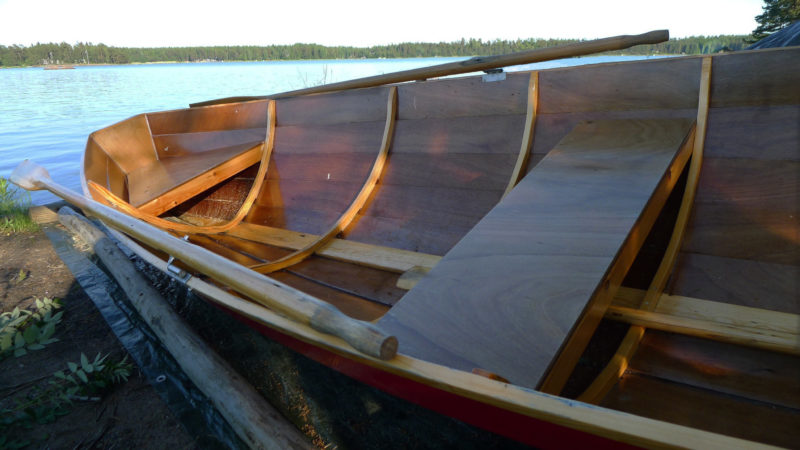 all photographs by Simon Allston
all photographs by Simon AllstonTraditional Finnish rowing boats had closely spaced steam-bent frames. The Saajuu’s glued-plywood lapstrake construction allows the use of widely spaced laminated frames. The folding tholes set the oars on the gunwales when not in use.
The Saajuu 470 is outfitted with two pairs of Puuvenepiste’s Sarana oarlocks, folding stainless-steel thole pins. The pins are bent in an L shape, with the vertical leg going through a hole in the oar and the horizontal leg pivoting in a sleeve that’s welded to a bracket fixed to the gunwale. A flange on the vertical leg keeps the oar from wearing on the gunwale and a hole at the top for an R pin keeps the oar from slipping off unintentionally. The hole in the oar fixes the blade angle and has a nylon bushing to reduce friction and wear. Like most Finnish oarlocks, the Sarana locks don’t let you feather the oars. Racing boats are not allowed by Finnish Wooden Boat Rowing Association rules to have feathering oars and their most common fitting is a fixed upright metal thole that fits a cleat through-bolted on the aft-facing side of the oar shaft. The top of the thole pin is curved aft to prevent the oar from accidentally unshipping. The folding Sarana locks, also favored by racers, have the advantage of rotating the blades flat and bringing the looms inboard to rest the oars on the gunwales.
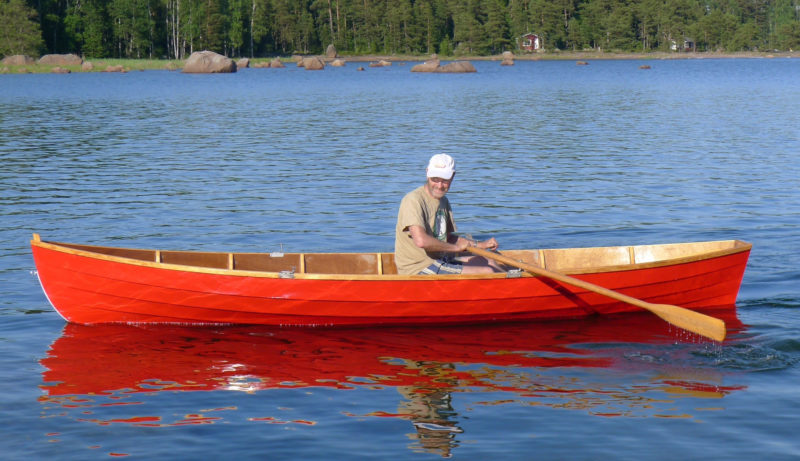
With a single rower aboard, the Saajuu is perfectly trimmed. The rocks in the distance are common along Finnish lake shores and require boats like the Saajuu to be easily and quickly steered.
The lakes in this region of Finland are many and often expansive; waves reaching 5′ to 6′ are not uncommon. The upswept sheer at the bow helps the Saajuu ride high over waves rather than cutting through them, as the Puuvenepiste racing skiffs are designed to do. The Saajuu has rowing stations at the center thwart and the bow thwart and there’s space enough between them for rowing double. With a single 176 lb (80kg) rower at the center thwart the Saajuu sits perfectly trimmed and handles easily even with a passenger/paddler in the stern.
Without a passenger or a load aboard the Saajuu is very lively and easy to maneuver. The boat is so light, just 132 lbs (60kg) including oars and paddle, that the addition of a passenger feels like a dramatic increase in weight. When I rowed as the only occupant in the front position, the trim of the Saajuu was off with my weight so far forward, but even so it handled and tracked well. On the beach, the boat was not too heavy to handle on my own, and with a second pair of hands it can be lifted easily and carried to and from the water. The light weight and the 54 ⅜″ (1,385 mm) beam make the Saajuu quite convenient for cartop transport on a standard family-size sedan.
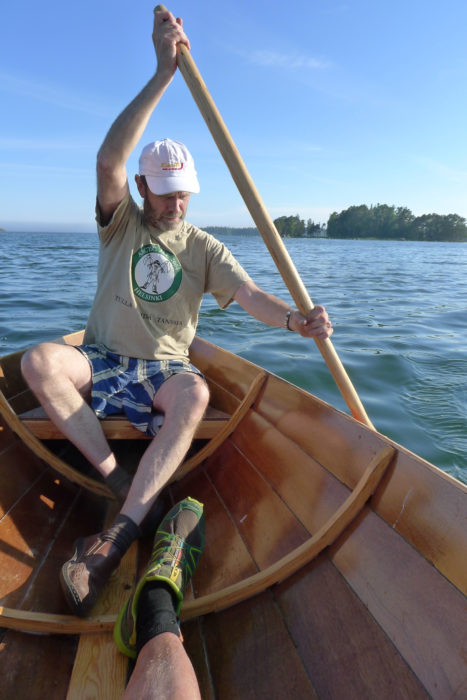
A paddler seated aft can contribute power and a high degree of maneuverability. The traditional paddle is long and has a grip like that of an oar.
When I sat in the stern seat with the paddle while my photographer Simon was rowing, the boat was remarkably easy to maneuver from the stern with the 5′-long paddle. The paddle, typical of those used in racing, had a grip like an oar rather than a T-shaped grip common on canoe paddles. Facing forward, of course, I had a good view of what was ahead so Simon didn’t have to twist around to see over the bow. Paddling in synch with the rower keeps the boat moving smoothly and shares the load at the catch. Switching sides while paddling forward makes gentle course corrections without slowing the boat or putting a strain on the rower; ruddering and braking with the paddle is an option when quick maneuvering is required. While the Saajuu 470 has a fair curve to its sheer, racing shift or switch boats have gunwales that run absolutely straight over the rear 5’ or 6’, and the narrowed beam makes it easier to reach the water and paddle more powerfully. In the popular Finnish shift- or switch-rowing racing class, the two-person crews deftly swap positions on the fly every few minutes: Rowing and paddling use different sets of muscles and, as the saying goes, the change is as good as a rest.
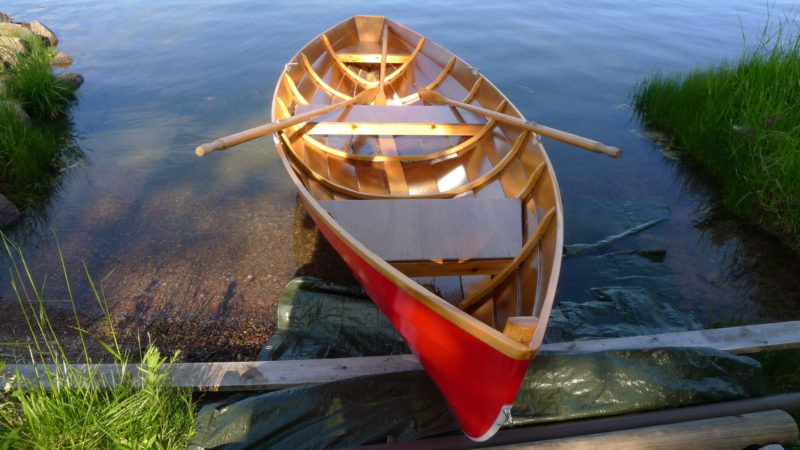
The Saajuu’s plywood construction and minimal interior outfitting keep its weight low.
The paddle stows easily between the benches in the aft working area, where there is plenty of storage space for cruising cargo as well as fishing equipment, though it needs to be secured to keep it from getting in the way of the rower’s legs. While I was rowing I braced my feet against one of the spruce ribs. This wasn’t a problem during the short trial journey I undertook but I would have preferred an adjustable foot brace to save wear from shoes resting on the ribs of the hull and to provide a firm platform for the balls of my feet. Puuvenepiste offers sliding seats and while installing a sliding seat in a Saajuu would make it quite a competitive racing craft, this would require removing the central thwart and a little compensatory carpentry; not too difficult, but the alteration would compromise the flexibility of the craft’s general-purpose design. Puuvenepiste’s Savo 650 and Savo 575 are specifically designed for sliding-seat rowing whether for racing or cruising.
The Saajuu’s transom is wide enough to take a 3- or 4-hp outboard. The owner of my test boat used a small electric motor for trolling silently at slow speeds, although the same motor can propel the Saajuu forward at up to 4 miles an hour.
The Saajuu 470 is a very attractive craft, combining visual appeal with traditional lines and admirable handling features. At present it’s only available as a finished boat built in Finland, but Ruud promises that a kit package will be available from Puuvenepiste soon.![]()
Anthony Shaw is a former school rower who has rediscovered the pleasures of “slightly competitive” rowing after a hiatus of nearly 40 years. He has lived half his life in Finland.
Saajuu 470 Particulars
[table]
LOA/15′5″
Beam/54.5″
Depth/23.9″
Weight, equipped/132 lbs
Recommended outboard engine/up to 4 hp
[/table]

A Finnish TV program video provides a good look the Sulkava Rowing Race with a shift-boat race start at 4:24 and a team trading places at 3:00. During the switch the boat loses less than a boat length to other racers. A church boat races starts at 6:00.
Scenes filmed in 1938 show a rural couple getting aboard a skiff (1:09) equipped with horned rowlocks, but the man doesn’t feather his blades. The woman sits with a paddle resting across the gunwales. A church boat (3:10) is equipped with 20 oars held by lanyards against single flat tholes. The helmsman steers with a paddle.
Finished boats (but not plans) are available through Ruud Van Veelen of Suomen Puuvenepiste Oy. An authorized builder of Van Veelen boats in the United States is Walter Baron of Old Wharf Dory Company.
Is there a boat you’d like to know more about? Have you built one that you think other Small Boats Monthly readers would enjoy? Please email us!
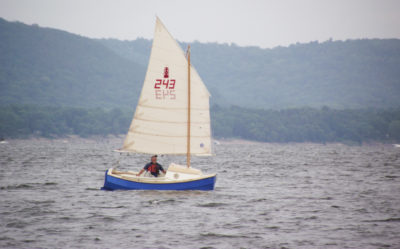
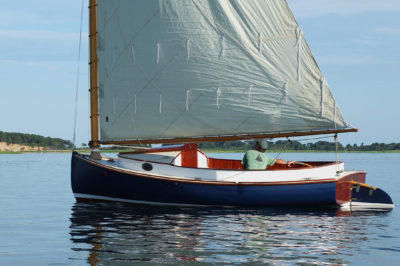
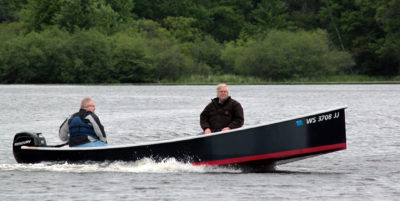
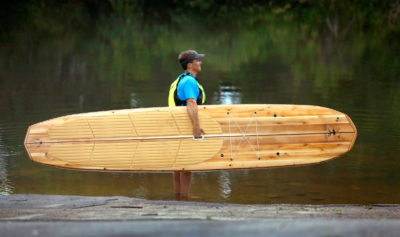
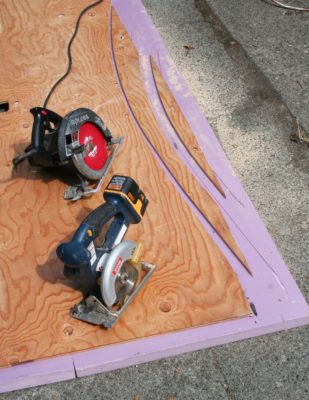
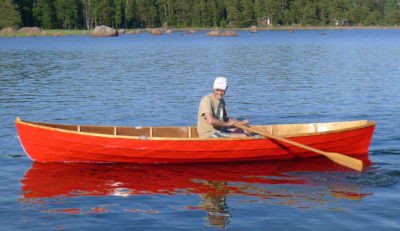
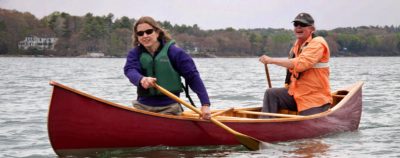

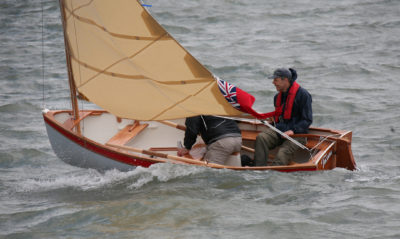
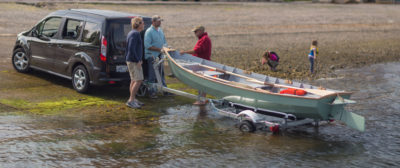
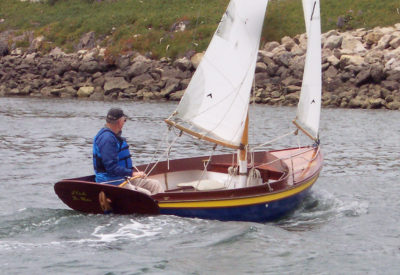
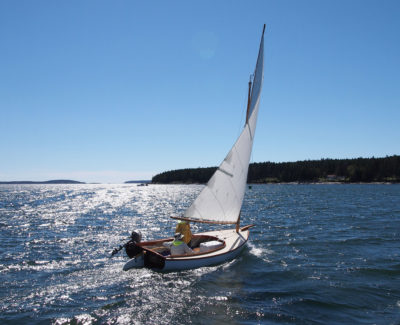
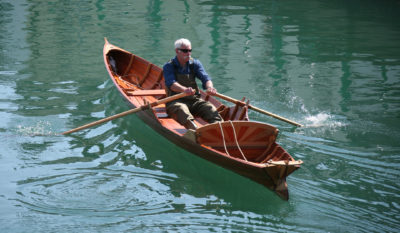
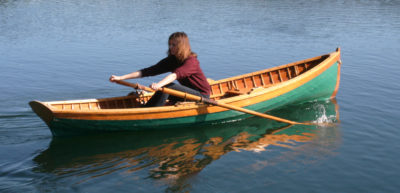
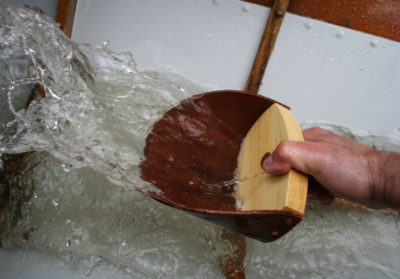
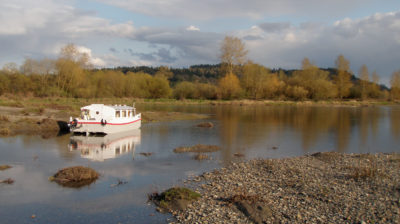
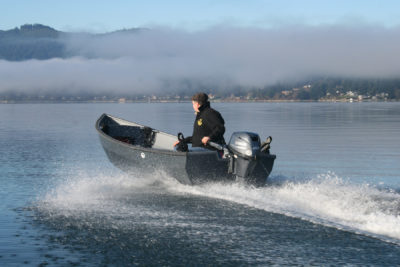
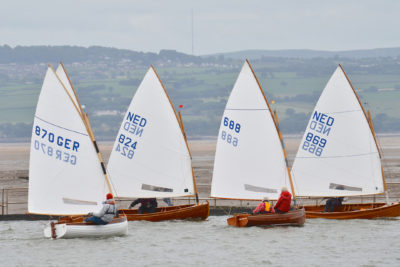
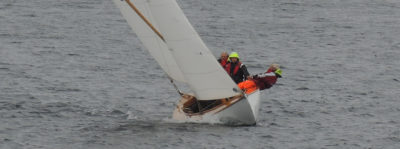
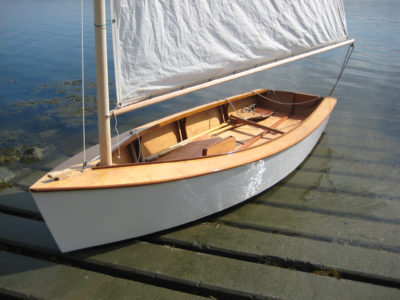
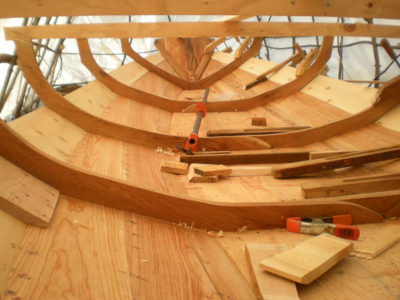
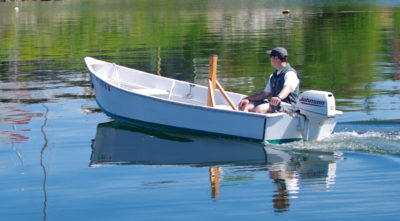
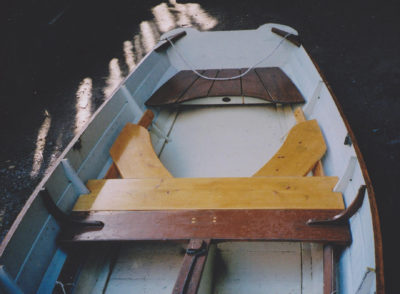
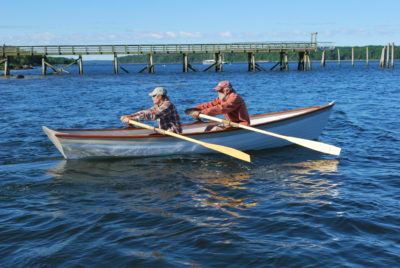
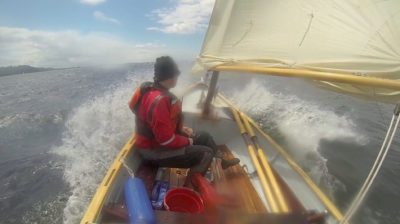

It makes you realize where the origins of the great voyages by Northmen and Vikings arose and their skills at boatbuilding and endurance in open boats. Excellent information.